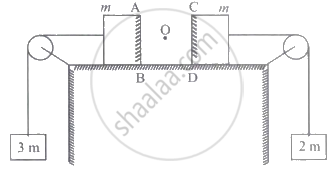Advertisements
Advertisements
प्रश्न
State Newton’s laws of motion?
उत्तर
- Newton’s First Law: Everybody continues to be in its state of rest or the state of uniform motion along a straight line unless it is acted upon by some external force.
- Newtons Second law: The force acting on a body is directly proportional to the rate of change of linear momentum of the body and the change in momentum takes place in the direction of the force.
- Newtons Third Law: For every action, there is an equal and opposite reaction. They always act on two different bodies.
APPEARS IN
संबंधित प्रश्न
The following is the distance-time table of an object in motion:
| Time in seconds | Distance in metres |
| 0 | 0 |
| 1 | 1 |
| 2 | 8 |
| 3 | 27 |
| 4 | 64 |
| 5 | 125 |
| 6 | 216 |
| 7 | 343 |
- What conclusion can you draw about the acceleration? Is it constant, increasing, decreasing, or zero?
- What do you infer about the forces acting on the object?
A car of mass 2400 kg moving with a velocity of 20 m s-1 is stopped in 10 seconds on applying brakes. Calculate the retardation and the retarding force.
State and explain Newton’s second law of motion.
If a balloon filled with air and its mouth untied, is released with its mouth in the downward direction, it
moves upwards. Why ?
Complete a sentence and explain it.
During a collision, ______ remains constant.
Newton’s III law is applicable
State Newton’s second law.
Using the second law of motion, derive the relation between force and acceleration. A bullet of 10 g strikes a sand-bag at a speed of 103 m s-1 and gets embedded after travelling 5 cm. Calculate
(i) the resistive force exerted by the sand on the bullet
(ii) the time is taken by the bullet to come to rest.
A force vector applied on a mass is represented as `vecF = 6hati - 8hatj + 10hatk` N and accelerates the mass at 1 ms-2. The mass of the body is ______.
Two blocks each of mass m lie on a smooth table. They are attached to two other masses as shown in the figure. The pulleys and strings are light. An object O is kept at rest on the table. The sides AB and CD of the two blocks are plane and made reflecting. The acceleration of two images formed in those two reflecting surfaces with respect to each other is ______.

